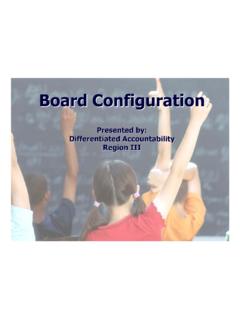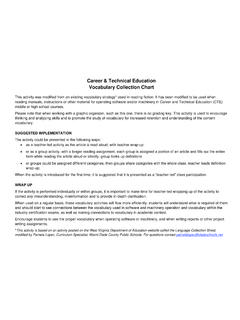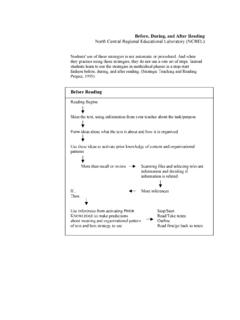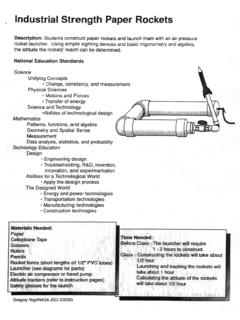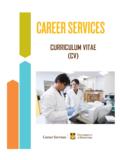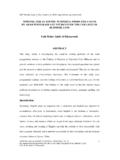Transcription of READING/LANGUAGE ARTS BENCHMARKS GRADE: 6
1 READING/LANGUAGE arts BENCHMARKS grade : 6 Strand: reading PROCESS Standard 5: Fluency The student demonstrates the ability to read grade level text orally with accuracy, appropriate rate, and expression. benchmark CODE The student will adjust reading rate based on purpose, text difficulty, form, and style. Standard 6: Vocabulary Development The student uses multiple strategies to develop grade appropriate vocabulary. benchmark CODE The student will use new vocabulary that is introduced and taught directly; The student will listen to, read, and discuss familiar and conceptually challenging text; The student will use context clues to determine meanings of unfamiliar words; The student will categorize key vocabulary and identify salient features; The student will relate new vocabulary to familiar words; The student will distinguish denotative and connotative meanings of words; The student will identify and understand the meaning of conceptually advanced prefixes, suffixes, and root words; The student will identify advanced word/phrase relationships and their meanings; The student will determine the correct meaning of words with multiple meanings in context.
2 The student will determine meanings of words, pronunciation, parts of speech, etymologies, and alternate word choices by using a dictionary, thesaurus, and digital tools; and The student will identify the meaning of words and phrases derived from Greek and Latin mythology ( , mercurial, Achilles' heel) and identify frequently used words from other languages ( , laissez faire, croissant). Standard 7: reading Comprehension The student uses a variety of strategies to comprehend grade level text. benchmark CODE The student will use background knowledge of subject and related content areas, prereading strategies, graphic representations, and knowledge of text structure to make and confirm complex predictions of content, purpose, and organization of a reading selection; The student will analyze the authors purpose ( , to persuade, inform, entertain, or explain) and perspective in a variety of texts and understand how they affect meaning; The student will determine the main idea or essential message in grade -level text through inferring, paraphrasing, summarizing, and identifying relevant details; The student will identify cause-and-effect relationships in text.
3 The student will analyze a variety of text structures ( , comparison/contrast, cause/effect, chronological order, argument/support, lists) and text features (main headings with subheadings) and explain their impact on meaning in text; The student will analyze and evaluate similar themes or topics by different authors across a variety of fiction and nonfiction selections; The student will compare and contrast elements in multiple texts; and The student will use strategies to repair comprehension of grade -appropriate text when self-monitoring indicates confusion, including but not limited to rereading, checking context clues, predicting, note-making, summarizing, using graphic and semantic organizers, questioning, and clarifying by checking other sources.
4 Strand: LITERARY ANALYSIS Standard 1: Fiction The student identifies, analyzes, and applies knowledge of the elements of a variety of fiction and literary texts to develop a thoughtful response to a literary selection. benchmark CODE The student will identify the characteristics of various genres ( , poetry, fiction, short story, dramatic literature) as forms with distinct characteristics and purposes; The student will locate and analyze the elements of plot structure, including exposition, setting, character development, rising/falling action, conflict/resolution, and theme in a variety of fiction; The student will locate and analyze the effects of sound, meter, figurative and descriptive language , graphics (illustrations), and structure ( , line length, fonts, word placement) to communicate mood and meaning; The student will identify and explain recurring themes across a variety of works ( , bravery, friendship, loyalty, good vs.)
5 Evil); The student will develop an interpretation of a selection and support through sustained use of examples and contextual evidence; The student will write a book report, review, or critique that compares two or more works by the same author; The student will locate and analyze an author's use of allusions and descriptive, idiomatic, and figurative language in a variety of literary text, identifying how word choice sets the author's tone and advances the work's theme; The student will compare language patterns and vocabulary of contemporary texts to those of historical texts; The student will explain how ideas, values, and themes of a literary work often reflect the historical period in which it was written; and The student will use interest and recommendation of others to select a balance of age and ability appropriate fiction materials to read ( , novels, historical fiction, mythology, poetry) to expand the core foundation of knowledge necessary to function as a fully literate member of a shared culture.
6 Standard 2: Nonfiction The student identifies, analyzes, and applies knowledge of the elements of a variety of nonfiction, informational, and expository texts to demonstrate an understanding of the information presented. benchmark CODE The student will locate, use, and analyze specific information from organizational text features ( , table of contents, headings, captions, bold print, italics, glossaries, indices, key/guide words); The student will use information from the text to answer questions related to the main idea or relevant details, maintaining chronological or logical order; The student will organize information to show understanding ( , representing main ideas within text through charting, mapping, paraphrasing, summarizing, or comparing/contrasting); The student will identify the characteristics of a variety of types of nonfiction text ( , reference works, newspapers, biographies, procedures, instructions, practical/functional texts).
7 The student will use interest and recommendation of others to select a variety of age and ability appropriate nonfiction materials ( , biographies and topical areas, such as science, music, art, history, sports, current events) to expand the core knowledge necessary to connect topics and function as a fully literate member of a shared culture. Strand: WRITING PROCESS Standard 1: Prewriting The student will use prewriting strategies to generate ideas and formulate a plan. benchmark CODE The student will prewrite by generating ideas from multiple sources ( , prior knowledge, discussion with others, writers notebook, research materials, or other reliable sources), based upon teacher-directed topics and personal interests; The student will prewrite by making a plan for writing that prioritizes ideas, addresses purpose, audience, main idea, and logical sequence; The student will prewrite by using organizational strategies and tools ( , technology, outline, chart, table, graph, web, story map).
8 Standard 2: Drafting The student will write a draft appropriate to the topic, audience, and purpose. benchmark CODE The student will draft writing by developing main ideas from the prewriting plan using primary and secondary sources appropriate to purpose and audience; The student will draft writing by organizing information into a logical sequence and combining or deleting sentences to enhance clarity; The student will draft writing by analyzing language techniques of professional authors ( , point of view, establishing mood) to enhance the use of descriptive language and word choices. Standard 3: Revising The student will revise and refine the draft for clarity and effectiveness. benchmark CODE The student will revise by evaluating the draft for development of ideas and content, logical organization, voice, point of view, word choice, and sentence variation; The student will revise by creating clarity and logic by rearranging words, sentences, and paragraphs, adding transitional words, incorporating sources directly and indirectly into writing, using generalizations where appropriate, and connecting conclusion to ending ( , use of the circular ending).
9 The student will revise by creating precision and interest by expressing ideas vividly through multiple language techniques ( , foreshadowing, imagery, simile, metaphor, sensory language , connotation, denotation) and modifying word choices using resources and reference materials ( , dictionary, thesaurus); The student will revise by applying appropriate tools or strategies to evaluate and refine the draft ( , peer review, checklists, rubrics). Standard 4: Editing for language Conventions The student will edit and correct the draft for standard language conventions. benchmark CODE The student will edit for correct use of spelling, using spelling rules, orthographic patterns, generalizations, knowledge of root words, prefixes, suffixes, and knowledge of Greek and Latin root words and using a dictionary, thesaurus, or other resources as necessary; The student will edit for correct use of capitalization, including major words in titles of books, plays, movies, and television programs; The student will edit for correct use of punctuation in simple, compound, and complex sentences, including appositives and appositive phrases, and in cited sources, including quotations for exact words from sources.
10 The student will edit for correct use of the eight parts of speech (noun, pronoun, verb, adverb, adjective, conjunction, preposition, interjection); The student will edit for correct use of consistency in verb tense in simple, compound, and complex sentences. Standard 5: Publishing The student will write a final product for the intended audience. benchmark CODE The student will prepare writing using technology in a format appropriate to audience and purpose ( , manuscript, multimedia); The student will use elements of spacing and design for graphics ( , tables, drawings, charts, graphs) when applicable to enhance the appearance of the document; and The student will share the writing with the intended audience. Strand: WRITING APPLICATIONS Standard 1: Creative The student develops and demonstrates creative writing.
